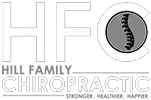
There are over 150 different types of headaches. Isn’t that a horrible thought? As a chiropractor for headaches, I can say that my patients definitely don’t like hearing that. It’s like saying there are 150 different ways to absolutely destroy your day or week, not to mention the days and weeks of anyone who comes too close to a headache sufferer.
We see a few types of headaches more often than the others, which will hopefully bring readers some relief.
Identifying the particular hellscape that a patient is experiencing is important to treat it and prevent it from becoming a chronic issue. Definitely seek out professional help if experiencing any of the following symptoms alongside a headache:
- Stiff neck
- Rash
- “This is the worst it’s ever been”
- Vomiting
- Confusion
- Slurred speech
- Any fever of 100.4ºF or higher
- Paralysis in any part of the body
- Visual loss
Headaches are always a reaction to an underlying issue. That issue could be a misaligned spine putting pressure on nerves causing pain and dysfunction. It could be an allergic reaction caused by a nerve not functioning properly because the spine is misaligned. It could be from muscle tension due to the spine being misaligned placing stress on muscles that are not meant to handle that stress. There seems to be a common thread here.
Here are 10 of the most common headaches we see in the office.
1. Tension
This is the BMOC (Big Man on Campus, I had to explain the acronym recently so I just want to be safe). Tension headaches are the most common type of headache as they are often triggered by stress. And there’s nothing that defines America better than stress.
Tension headaches present as a dull, aching, non-throbbing pain that forms a band in the forehead, scalp, and neck when the muscles become tense. This tension is brought on by stress – physical or emotional – fear, and the general emotional rollercoaster of life.
If a tension headache becomes chronic, it’s important to take action to address the underlying headache trigger.
2. Cluster
I’m sorry to say, but these suckers are not pretty. Cluster headaches present with severe burning and piercing pain behind one eye or one side of the face. Swelling, redness, flushing, sweating, nasal congestion, and eye tearing can also often occur on the same side as the headache.
These headaches cluster in a series, usually one to four a day lasting from 15 minutes to three hours. After one headache subsides, expect another on its way. Their reliability is to be commended.
3. Migraines
A migraine is a recurring headache with a deep, intense, pulsing pain that can sometimes last for days. It’s usually localized to one side of the head. Migraines also carry with them a variety of “delightful” symptoms.
About one in five people will experience a migraine with aura. The “lucky” 20% experience visual disturbances before an attack like:
- Flashing lights
- Shimmering lights
- Zig zag lines
- Stars
- Blind spots

These auras can also cause tingling in the face or arm and trouble speaking. These symptoms mimic those of a stroke, so please seek professional attention if this is a new experience. No one will be mad to discover that it’s a migraine instead of a stroke.
Migraine attacks are hereditary, like dimples and a cleft chin, though they are not as cute. Those suffering from a migraine are often sensitive to light & smell, and nausea & vomiting will likely occur.
Let’s move on, because I feel like I’m bumming everyone out.
4. Allergy or Sinus
Those with chronic seasonal allergies are susceptible to sinus headaches as they are usually the result of an allergic reaction or a sinus infection. Pain is focused in the sinus area and front of the head.
5. Hormone
Women are particularly susceptible to headaches, sorry ladies.
Hormonal changes in women often result in headaches. Fluctuating estrogen levels during menstruation, pregnancy, or the use of birth control can trigger headaches. 60% of women with migraines also experience menstrual migraines. Alternative remedies like relaxation techniques, yoga, acupuncture, and a modified diet may help prevent a migraine’s onset.
6. Caffeine
Caffeine changes our brain chemistry, it is a stimulant after all, by affecting blood flow to the brain. Exposing the brain to a certain amount of caffeine each day can make a withdrawal trigger a headache. Overdoing it can also be a trigger.
Not everyone will have the same reaction to caffeine, but it’s important to maintain a steady, reasonable level of caffeine intake, or find a way to wean off of it. Like putting espresso powder in brownies and having two brownies every morning.
7. Exertion
These headaches are triggered after intense physical activity, though that is not an excuse to avoid exercise. The increased blood flow to the brain during these activities can lead to a throbbing on both sides of the head.
They are, usually, quick to resolve themselves, but if they become a regular occurrence it’s important to discuss this with a doctor.
8. Hypertension
These headaches should be taken very seriously. They’re an emergency and happen as a result of dangerously high blood pressure.
A hypertension headache has a pulsating quality that usually occurs on both sides of the head and gets worse with activity. They can be accompanied by changes in vision, numbness and tingling, nosebleeds, chest pain, and shortness of breath.
If high blood pressure is an issue, take these headaches seriously and seek medical attention. Maintaining healthy blood pressure will help keep them under control.
9. Rebound
Rebound headaches are the perfect example of why we encourage our patients to skip the OTC medications and opt for a natural alternative. Overuse of pain relievers and medications leads to more headaches, not fewer. Rebounds are a dull, tension-type headache that result from medication overuse. Weaning off of medication is the only treatment for rebound headaches.
10. Post-traumatic
Post-traumatic headaches feel like a migraine or tension-type headache that usually lasts a few months after a major head injury. The brain is discombobulated and needs a second to get everything together.
Below is a recent brain X-ray from a patient suffering from post-traumatic headaches:
Here’s the deal. Any type of pain is an alarm, it’s the body telling us that something is not right. Whether the underlying headache issue is related to posture or spinal misalignment or nerve dysfunction or muscle tension or an allergic reaction, only after that issue has been addressed can patients see lasting headache relief. Call our office or schedule a time to meet with one of our amazing doctors here. Headaches may be common, but they are not normal. Pain is not normal.

